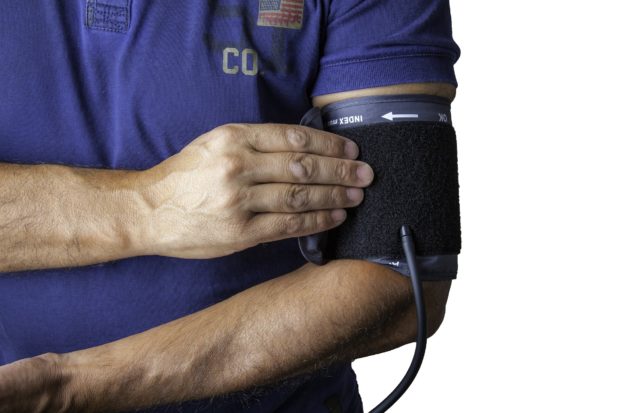The dark side of technology is what scientists call technostress. This condition is defined as stress induced by information and communication technology. It affects both on the job work performance and personal life.
What Technostress Does to Employees
Technostress causes a number of different symptoms:
- headaches
- anxiety
- fatigue and tiredness
- skepticism
- back/muscle/joint disorders
- exhaustion syndrome
- psychological disorders such as depression or behavioral disorders
- reduced satisfaction with work and personal life
- lowered productivity
- personality disorders
- skin symptoms from computer screens (flushing, burning, tingling skin; especially on the face and neck with sores, blisters or whelts that subside after a change in environment some hours later)
- dizziness
- sleepiness
- cognitive and memory problems
- impaired ability to function normally in social interactions
- odor and noise intolerance

Physiologically, researchers have reported not only significant blood pressure increases during the use of technology, but also these surprising negative changes:
- altered cardiac output and heart rhythm changes
- damage to red blood cells
- disturbed blood glucose levels in the brain and insulin resistance
The symptoms associated with technostress are also the same ones associated with electromagnetic hypersensitivity (EHS) from exposure to electromagnetic fields (EMF), such as those emitted from wi-fi technology, cell phones, cordless phones, SMART appliances and meters, phone towers, internet routers, and microwave ovens.
Just to give you a better idea of where technostress can lead to, those with EHS usually have multiple organ symptoms.
There’s acute and chronic inflammation in the skin and in the nervous system, but they don’t stop there. The lungs, heart and blood vessels and musculoskeletal system may also be affected and it’s possible to develop Multiple Chemical Sensitivity and environmental intolerances as well.
The prevalence of EHS in the population has been reported up to 13.3% in Taiwan – and it’s a real threat at the workplace because of the technological dependence on tools that emit high EMF.
EMF directly penetrates the tissues of the body. In fact, in 2011, the World Health Organization classified EMF as potentially carcinogenic.
Workplace or technology?
Blaming technostress on work overload, role ambiguity, emotional overload, and lack of autonomy, transformational leadership, and social support may not be good enough on the part of employers.
If you look further into the problem, you will find the technology itself is a big part of the cause.
As examples, the use of smartphones, computers and internet routers depends on the use of wi-fi and high EMF. And dirty electricity, also called electromagnetic pollution, flows along electrical equipment wires, radiating high voltage transient gradients.
Interestingly, installing Graham/Stetzer filters in schools and work places with sick building syndrome have resulted in health improvements in staff and students within a matter of days.
Decreasing technostress
How to prevent technostress through positive technology will soon be the defining difference between companies that care about their employees and those that do not.
Here’s a list of a few different options employers have now to decrease technostress:
- Shinrin-Yoku, or Forest Bathing
Japanese scientists are ahead of researchers in other countries with their documentation of the benefits of shinrin-yoku or Forest Bathing. What it involves is simply 10-15 minutes of walking in a forest of trees. The trees emit medicinal compounds called phytoalexins, which stimulate the immune system.
Forest bathing also reduces the modern day stress response, including that related to technostress. It decreases burnout – and it’s easy for many companies to create a forest haven nearby for employees to breathe in the phytoalexins during lunchtime.
- Stress Reduction Training Programs
Cutting edge telecommunication system workers suffer from high levels of mental strain. Swedish researchers found that a stress reduction program significantly improved stress-sensitive hormone levels of prolactin, decreased mental strain and improved cardiovascular risk indicators in this type of employee. They suggest that more attention should be directed towards designing healthy and productive work environments where technostress is common. This would be the mark of a company’s strategic leadership in the field.
- Screening procedures
Screen new or existing employees for previous history of head injury, history of exposure to potentially neurotoxic chemicals, especially mold, as these may predispose employees to develop EHS. Offer inservice education on the topic of technostress. Screen employees for persistent organic pollutants may also help. One Swedish study found that those who were sensitive to technostress had increased concentrations of polybrominated diphenyl ether (pBDE) #47 and chlordane metabolite MC6. Screen employees for use of drugs, which may be an indirect result of technostresses already felt in an employee
4. Specialise
Create an EMF-safe environment by bringing in a building biologist/ electromagnetic field radiation specialist.
Unfortunately technostress is here to stay until communication technologies and electrical technology change the way they operate. This leaves all the changes really back in the employer’s lap. Why not be a leader in your field to make your work environment totally safe for employees by checking more into the topic?




![women [longevity live]](https://longevitylive.com/wp-content/uploads/2020/01/photo-of-women-walking-down-the-street-1116984-100x100.jpg)










